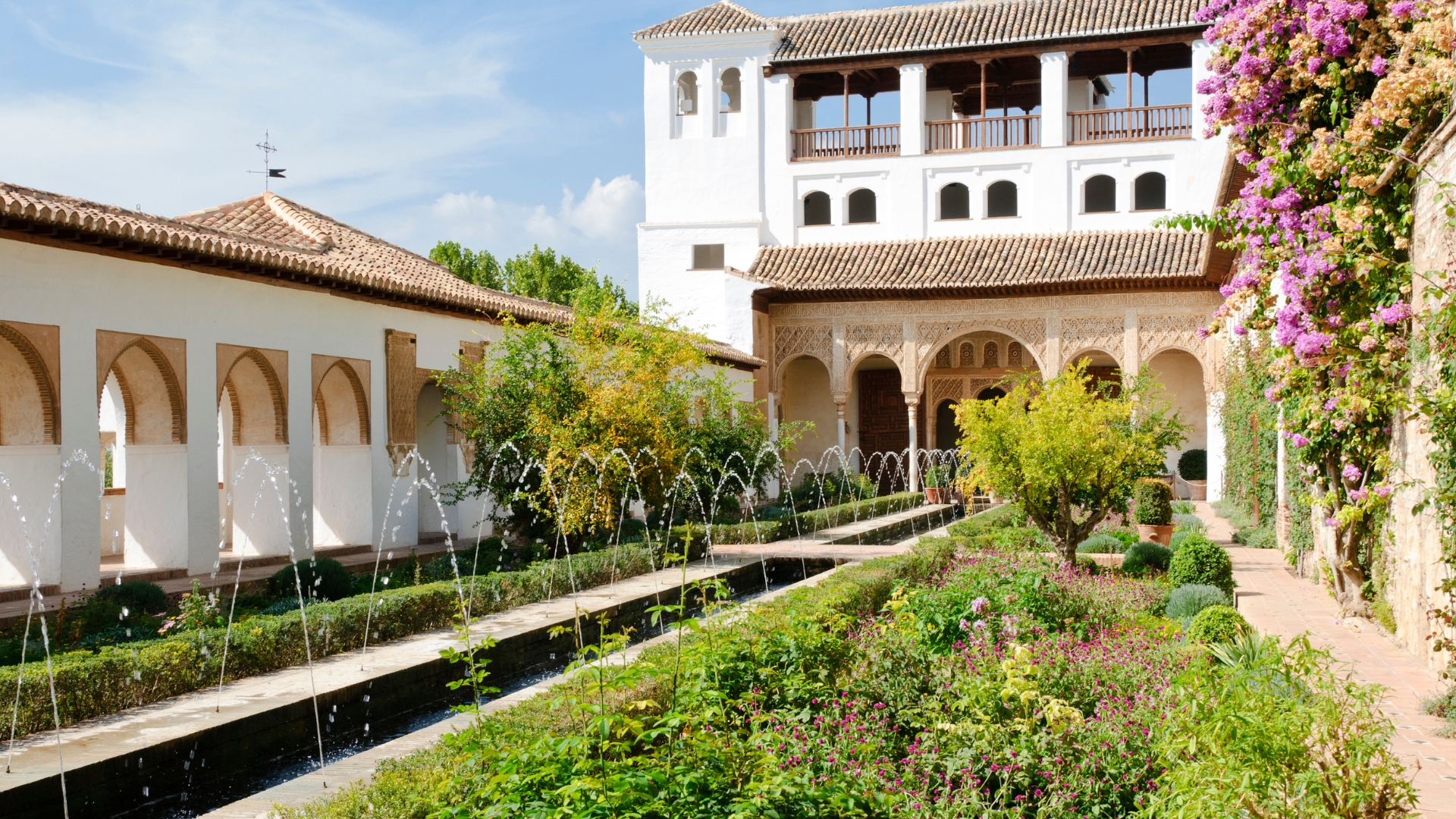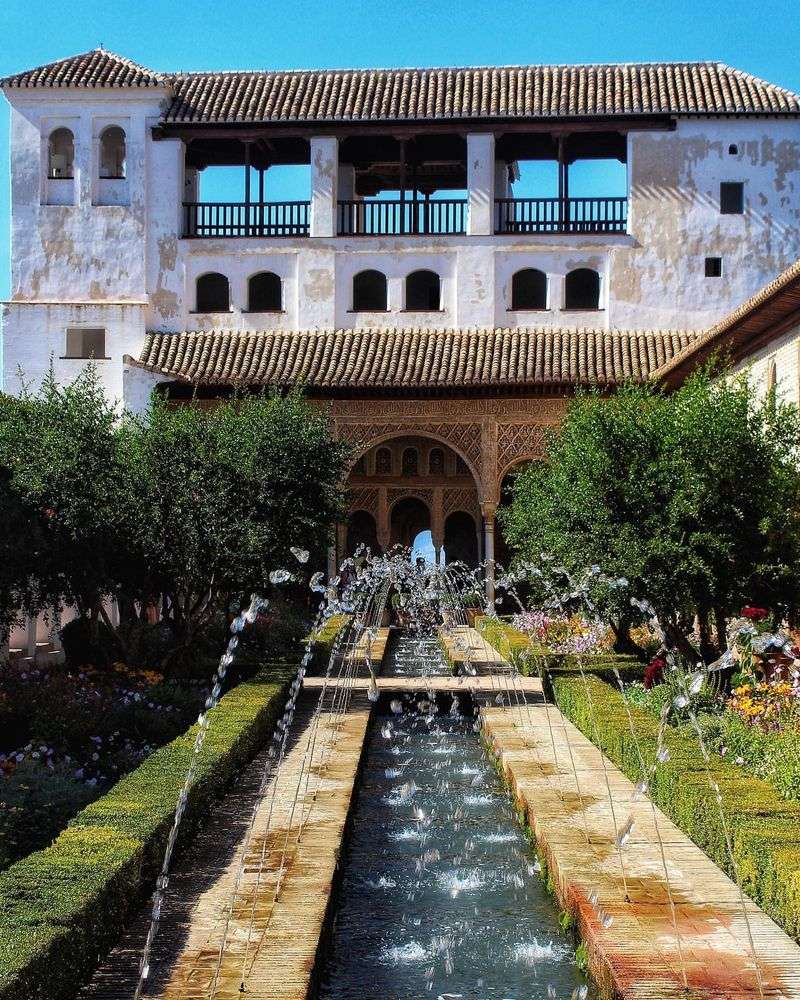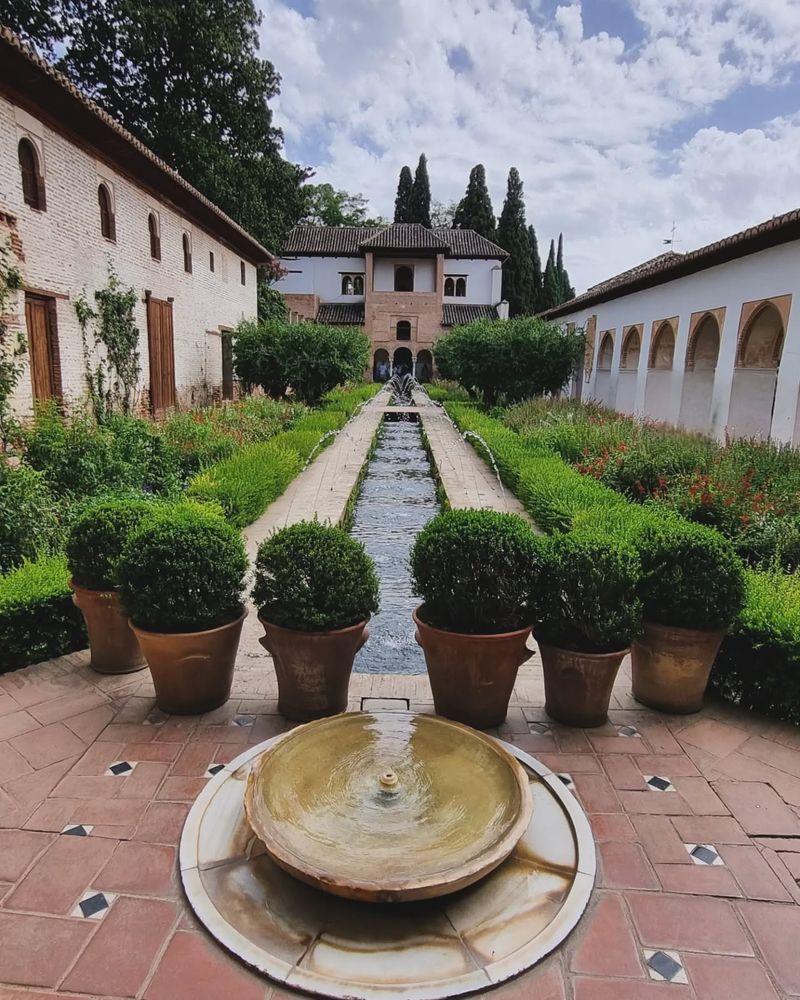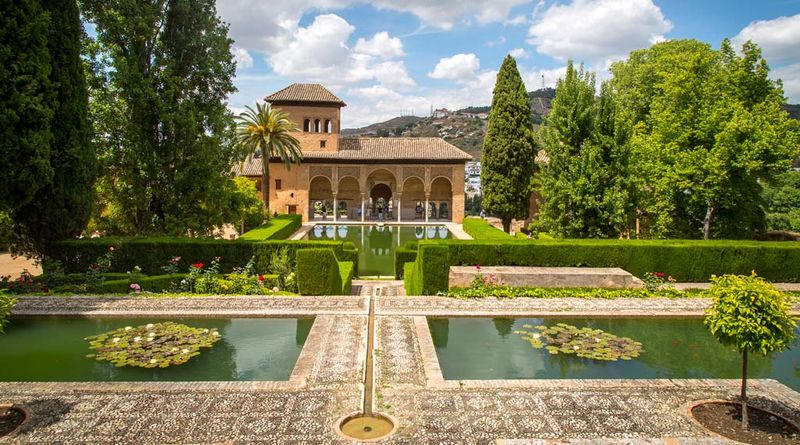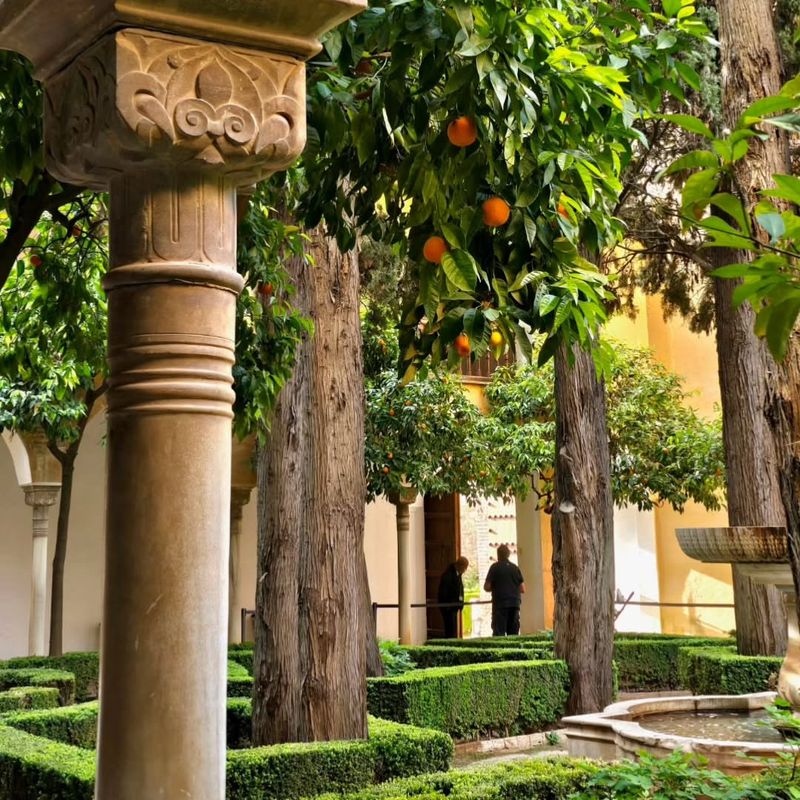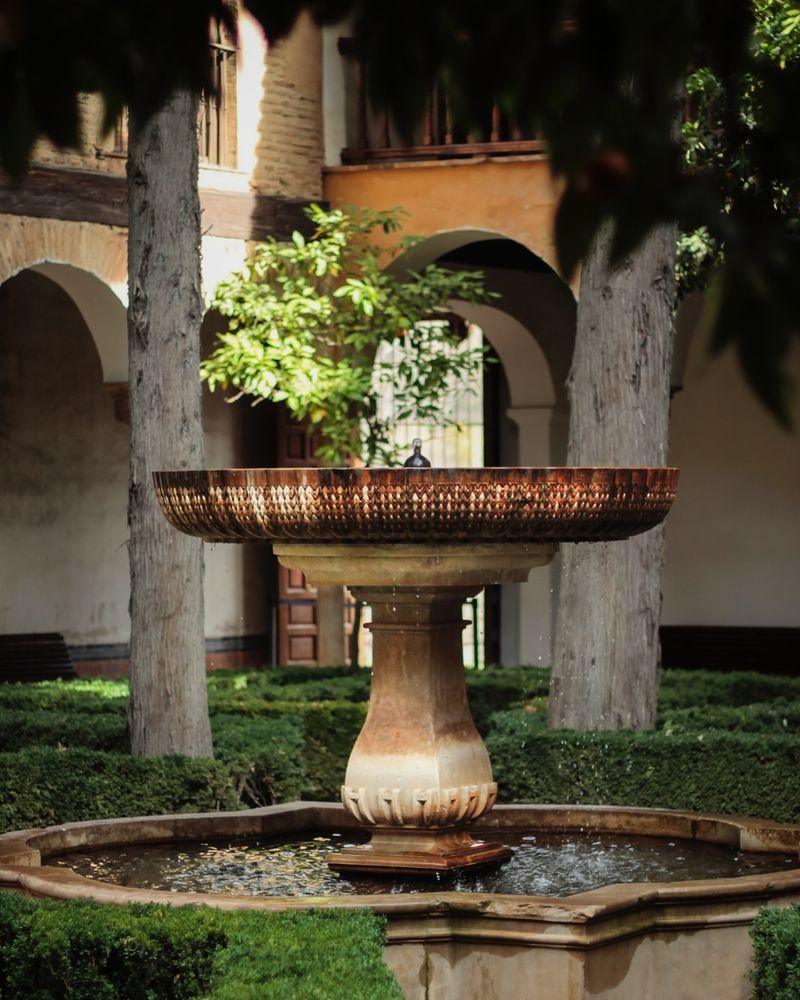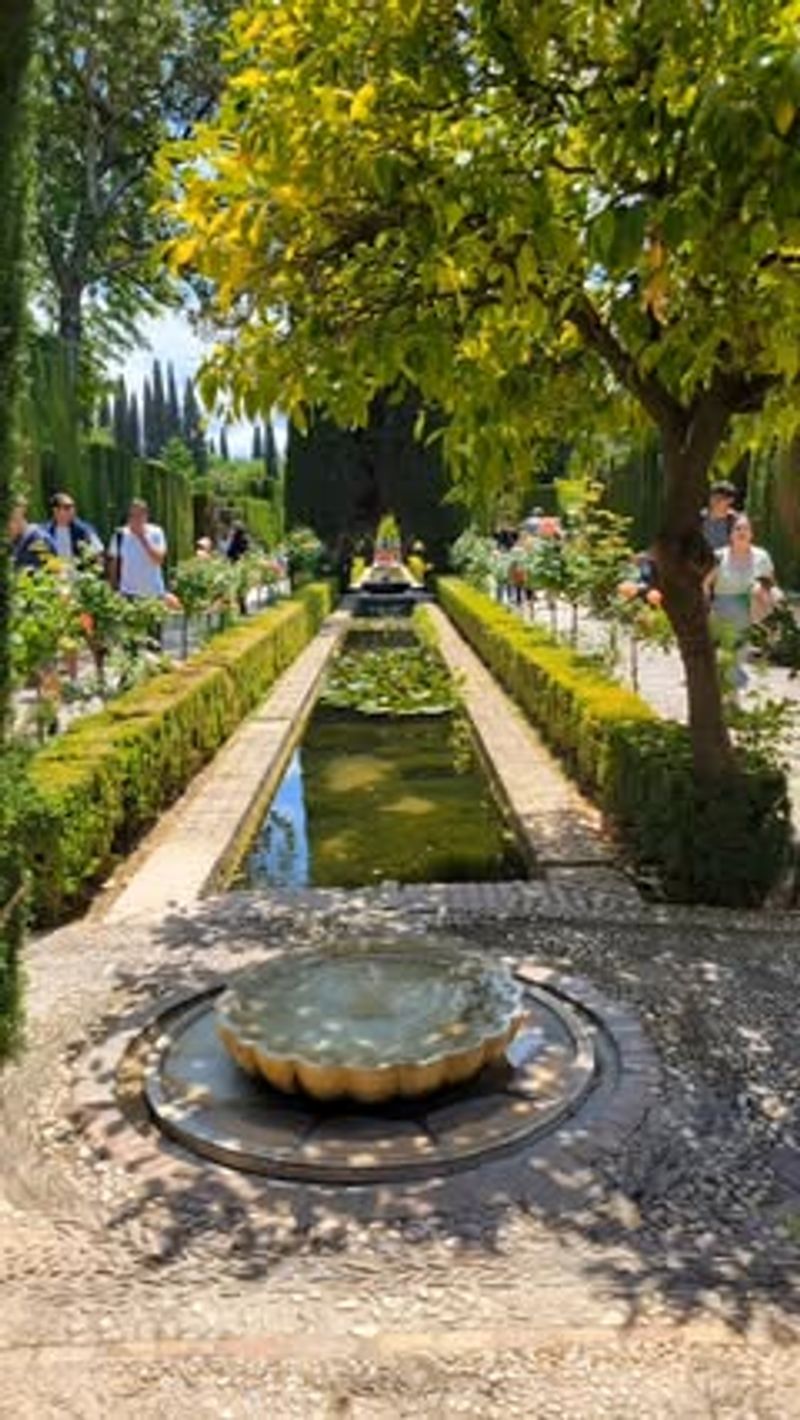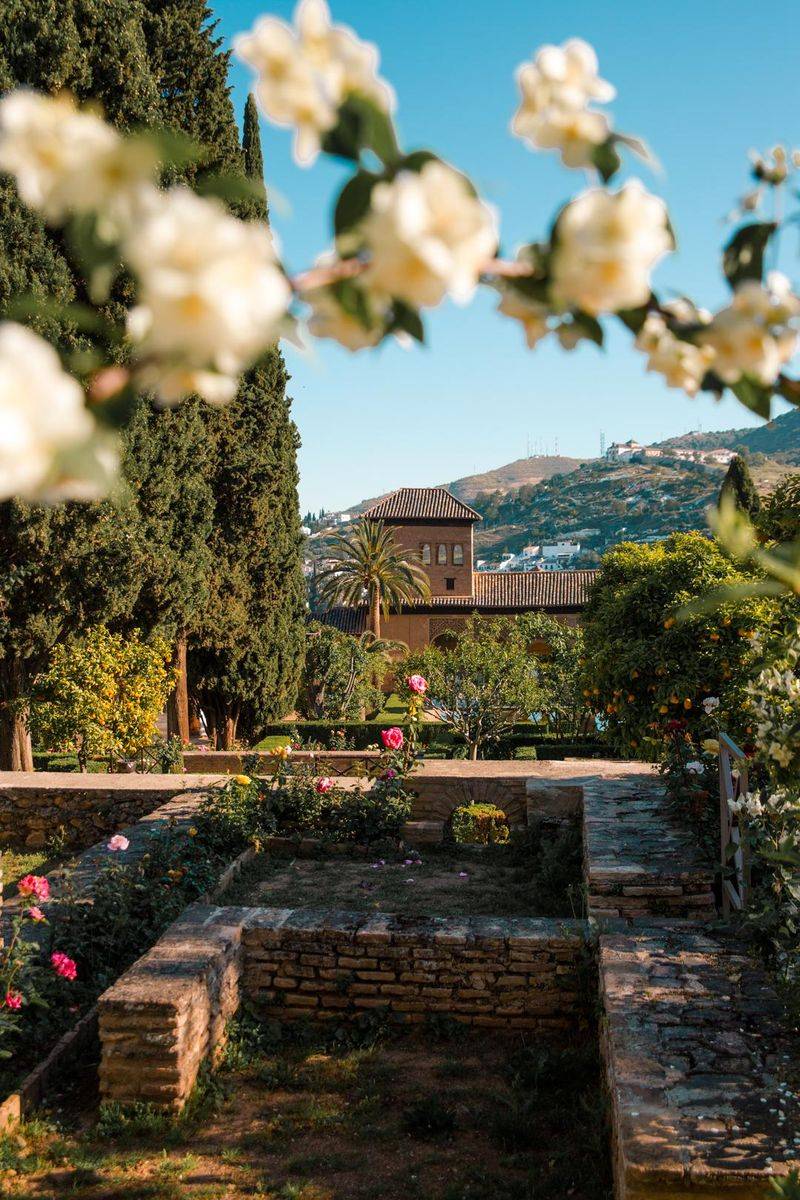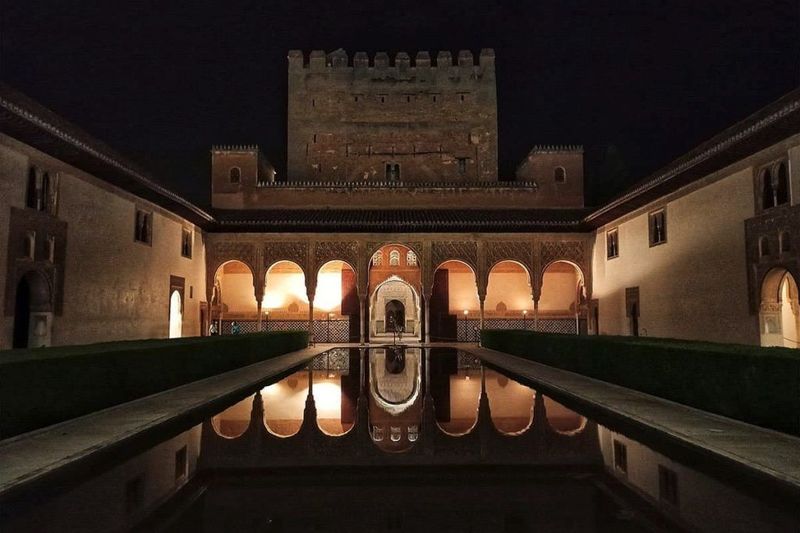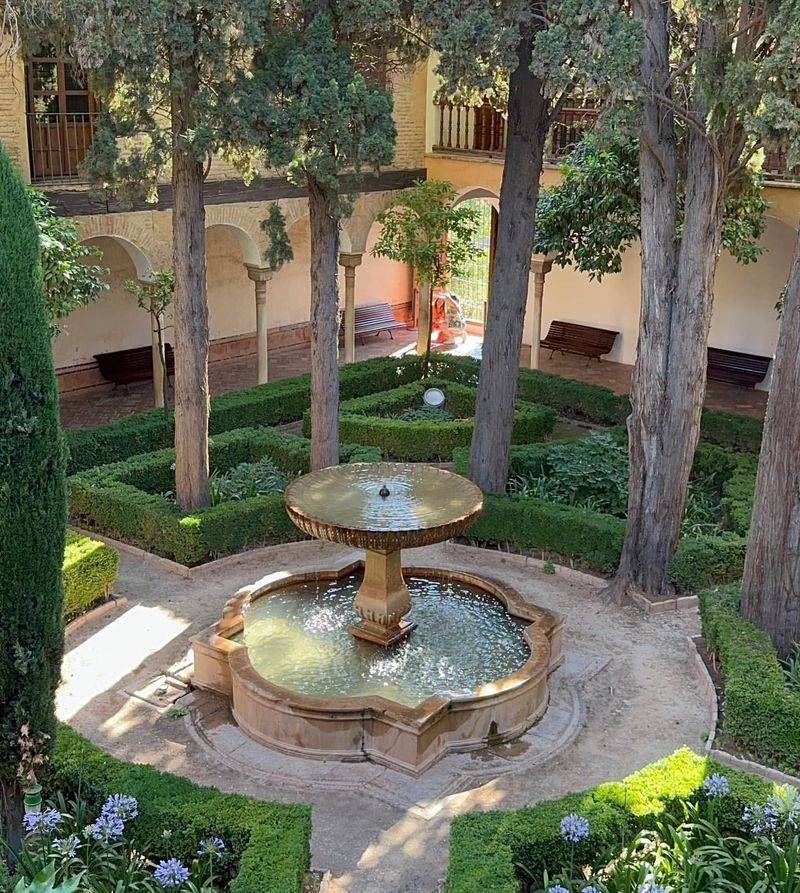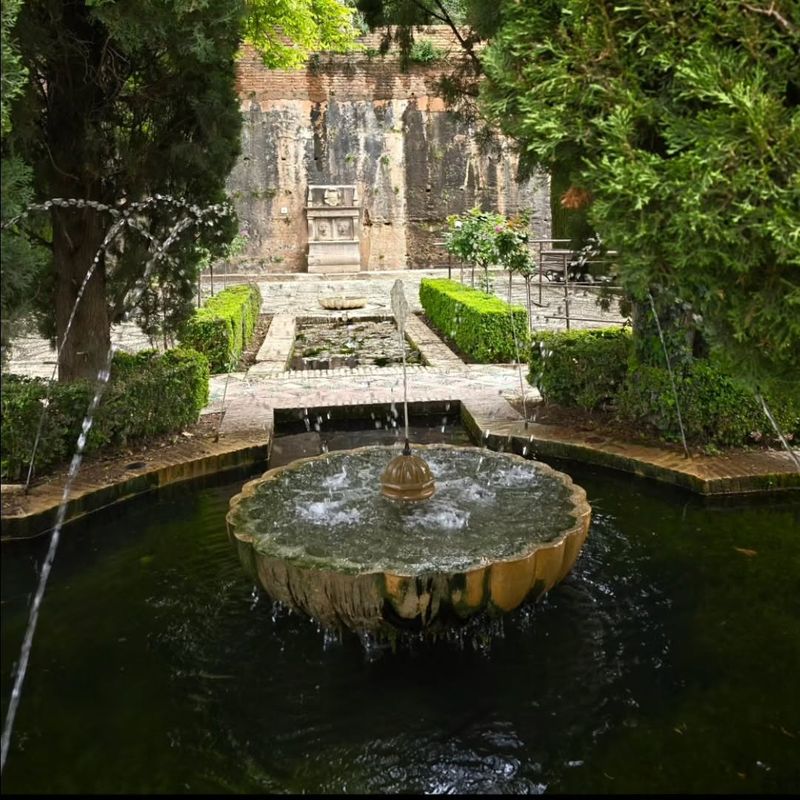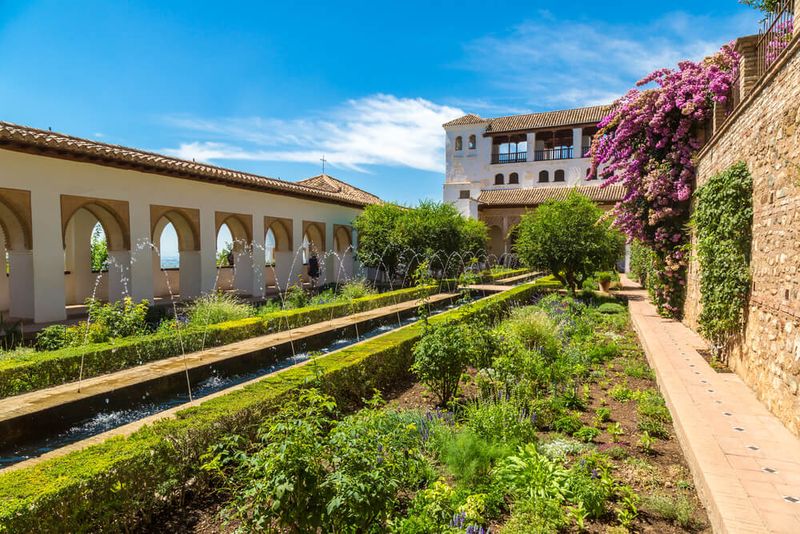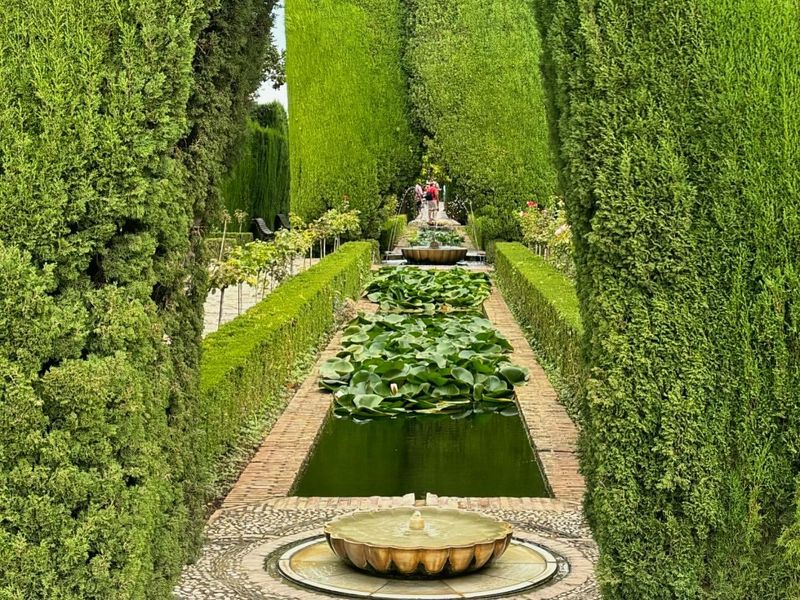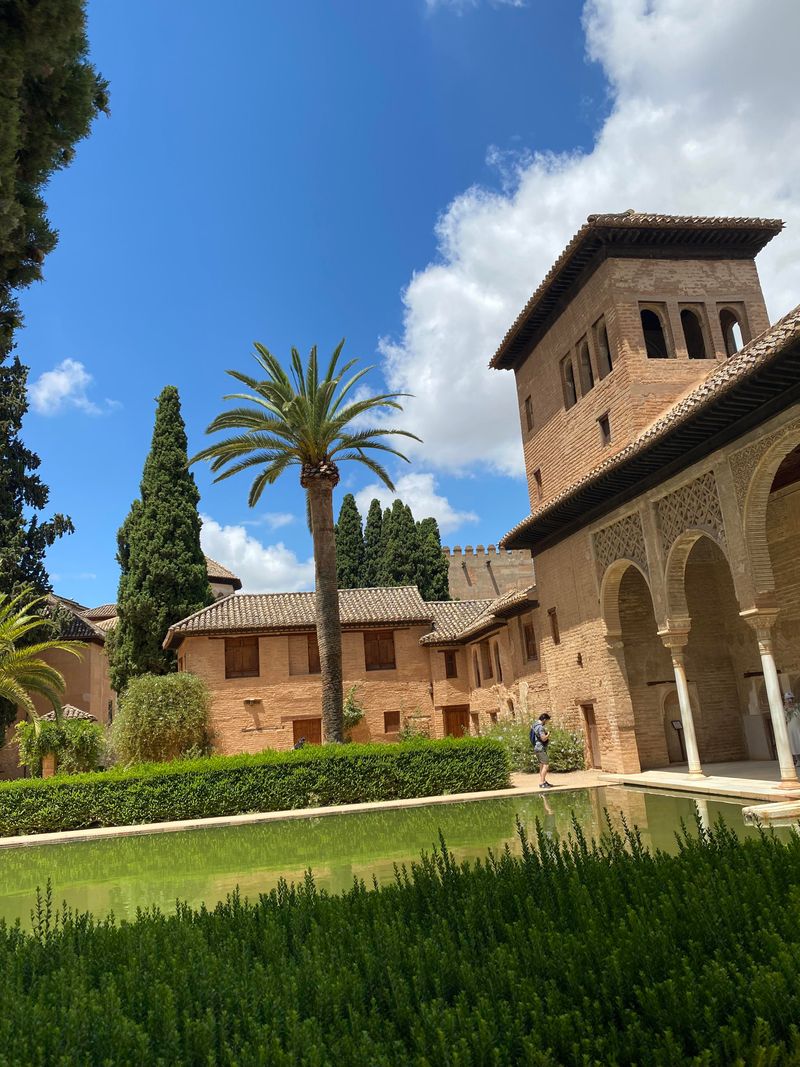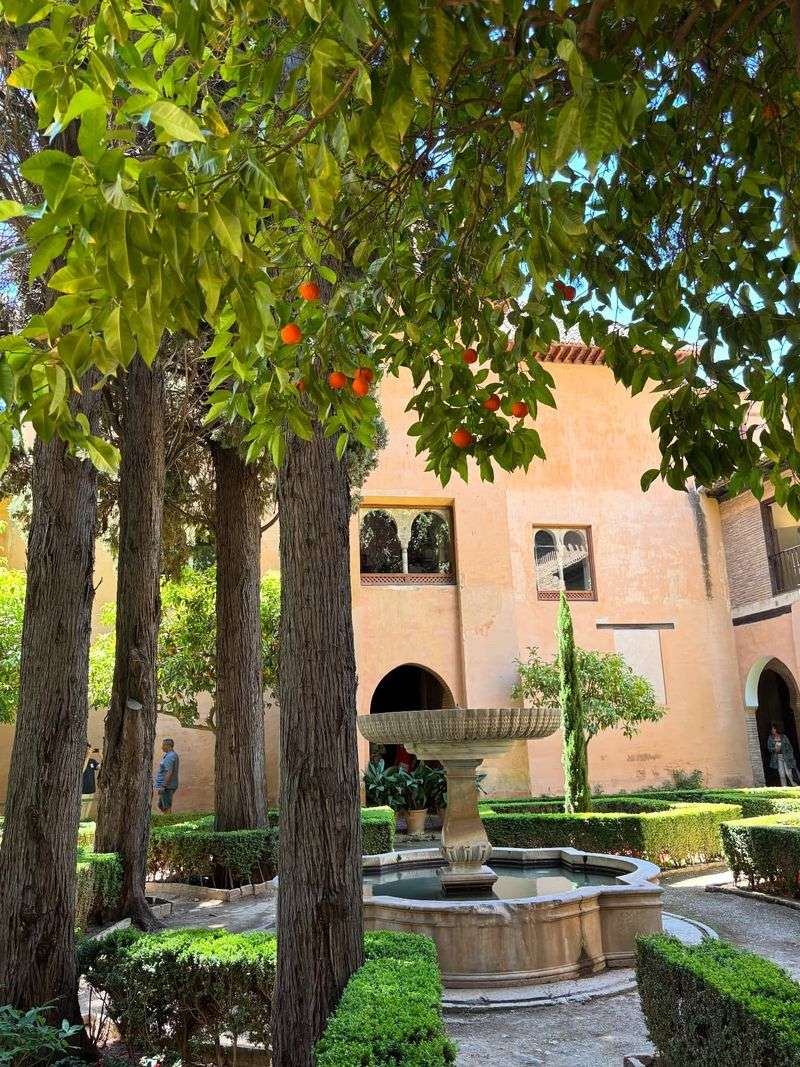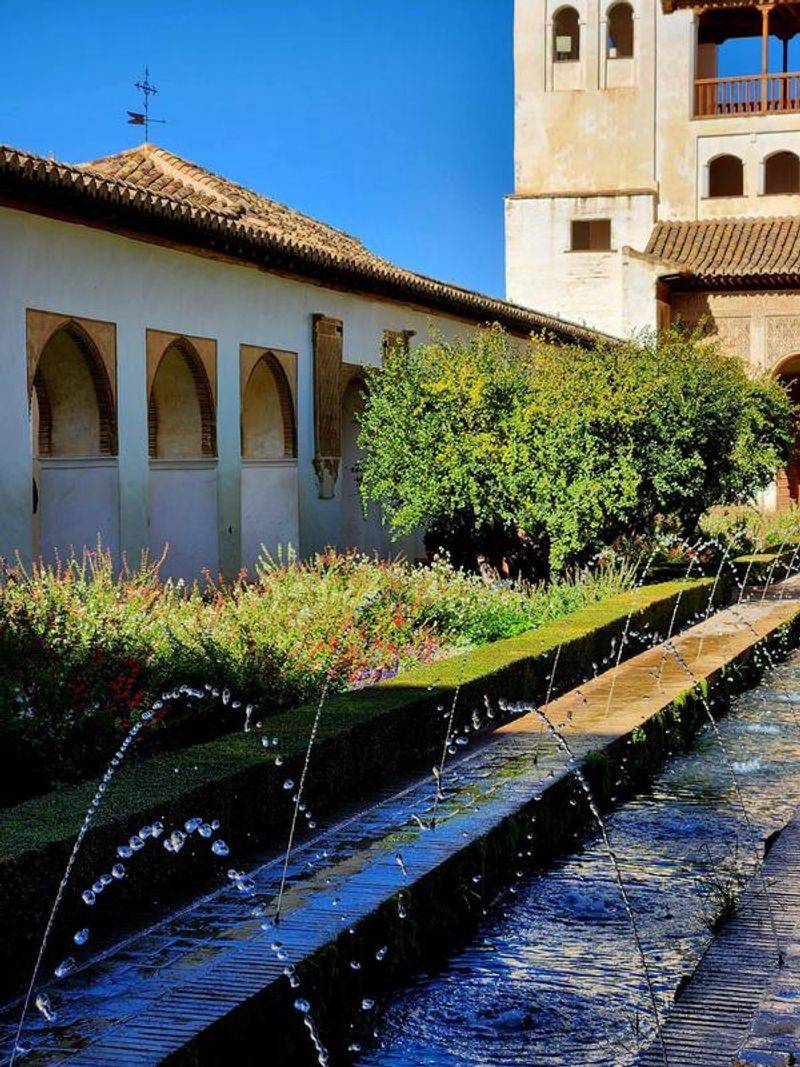Tucked within the ancient walls of the Alhambra, the gardens whisper stories of a Moorish golden age—where water danced through tiled channels, citrus trees perfumed the air, and geometry met serenity.
Now beautifully reimagined, these historic gardens have been carefully restored to reflect their original splendor, blending Islamic design, Spanish heritage, and lush Mediterranean beauty.
A stroll through this timeless paradise is more than a garden tour—it’s a step into centuries of art, culture, and cultivated peace.
1. Water as the Soul
Running water forms the lifeblood of Alhambra’s restored gardens, creating music that echoes through the courtyards. The Moors, coming from desert regions, viewed water as precious and incorporated it extensively throughout their design.
Modern engineers have painstakingly reconstructed the original hydraulic systems using archaeological evidence. These systems now function just as they did centuries ago, bringing the gentle sounds of flowing fountains back to life for today’s visitors.
2. Mathematical Garden Layouts
Behind the seemingly natural beauty lies mathematical precision that would impress modern architects. Gardeners have restored the original geometric patterns that guided plant placement, revealing the sophisticated planning behind the paradise.
Each courtyard follows strict mathematical proportions based on Islamic principles. The restoration team studied ancient texts and archaeological findings to recreate these precise measurements, ensuring visitors experience the gardens as they were originally intended – a perfect balance of nature and human design.
3. Ancient Irrigation Secrets
Long before modern sprinkler systems, Alhambra’s gardens thrived through ingenious water management. Restoration experts uncovered and rebuilt the complex network of channels, pools, and fountains that distributed water efficiently throughout the grounds.
The system works entirely by gravity, requiring no pumps or electricity. Small clay pipes hidden beneath pathways carry water to different garden sections, while tiny adjustable gates control flow rates. This sustainable approach provides lessons for today’s water-conscious gardeners seeking eco-friendly solutions.
4. Fragrant Time Capsules
Walk through the restored gardens and your nose might transport you back 700 years! Historians analyzed pollen samples from original soil layers to identify the exact plant species used by Moorish gardeners.
Jasmine, roses, citrus, and myrtle now grow in their historical locations, releasing the same fragrances that once pleased sultans. The restoration team sourced heirloom varieties genetically similar to medieval plants, creating an authentic sensory experience that connects visitors directly to the garden’s aromatic past.
5. Hidden Symbolism Revealed
Recent restoration work uncovered layers of symbolic meaning woven throughout the garden design. What appears as simple beauty actually communicates complex religious and philosophical ideas through plant selection and arrangement.
Orange trees represent eternal life, while cypress trees point skyward, guiding thoughts to heaven. Four-part garden divisions symbolize the four rivers of paradise described in the Quran. Restoration experts worked with Islamic scholars to ensure these symbolic elements were properly understood and preserved for modern visitors.
6. Seasonal Color Transformations
Unlike modern gardens that focus on year-round appeal, Alhambra’s original design embraced dramatic seasonal changes. Restoration gardeners reintroduced this concept by selecting plants that create distinct color palettes throughout the year.
Spring brings pink almond blossoms and purple wisteria. Summer showcases deep red roses and fragrant jasmine. Fall introduces amber and gold tones from deciduous trees, while winter highlights evergreen structure and citrus fruit. This seasonal rhythm connects visitors to the natural cycles celebrated in Moorish poetry.
7. Royal Fruit Orchards
Beyond ornamental beauty, Alhambra’s gardens once provided fresh produce for the royal court. The restoration project reclaimed this productive aspect by replanting historical fruit varieties throughout the grounds.
Pomegranates, a symbol of Granada itself (the city’s name derives from the Spanish word for pomegranate), grow alongside figs, apricots, and mulberries. Gardeners use traditional pruning techniques to maintain the trees in their historical forms. Some fruits are harvested for educational programs that teach visitors about medieval cuisine.
8. Nighttime Illumination Magic
The restoration team studied historical texts describing evening garden celebrations to recreate authentic nighttime lighting. Modern technology now mimics the original ambiance while protecting the historic structures.
Soft amber lights simulate oil lamps and candles that once lit the space. Water features include subtle illumination that captures the sparkling effect described in ancient poems. Special evening tours allow visitors to experience the gardens as they might have appeared during moonlit royal gatherings centuries ago.
9. Acoustic Design Elements
Sound played a crucial role in the original garden experience. Restoration experts discovered that certain water features were specifically designed to create particular sounds – from gentle whispers to dramatic splashes.
The Court of the Lions now features restored fountains with precisely calibrated water pressure to produce the original acoustic effects. Some water channels include small steps that create musical notes as water flows over them. These sound elements combine with bird habitat restoration to recreate the garden’s original soundscape.
10. Climate-Adaptive Design
Long before air conditioning, Moorish architects created naturally cool spaces through clever garden design. The restoration highlights these sustainable cooling techniques that work as effectively today as they did centuries ago.
Narrow water channels pull cool air through garden corridors. Strategically placed trees provide shade during peak heat hours. Evaporative cooling from fountains can lower surrounding temperatures by several degrees. Modern climate researchers now study these ancient methods for inspiration in developing sustainable cooling solutions for contemporary architecture.
11. Lost Plant Varieties Rediscovered
Garden archaeologists made exciting discoveries during the restoration process, uncovering evidence of plant species thought to be lost to history. Seed remnants and pollen samples revealed varieties unique to Alhambra’s original gardens.
Working with botanical specialists, the restoration team located surviving relatives of these plants in remote areas of Spain and North Africa. Through careful propagation, several near-extinct varieties now thrive again in their historical setting. Visitors can see living examples of plants that haven’t grown in European gardens for centuries.
12. Interactive Heritage Education
Modern visitors experience more than just visual beauty thanks to innovative educational elements incorporated into the restoration. Discrete information stations blend seamlessly with the historic setting while providing context.
Augmented reality apps allow visitors to see the gardens as they appeared in different historical periods. Hands-on workshops teach traditional Moorish gardening techniques like topiary and specialized pruning. School programs use the gardens to explore subjects ranging from mathematics to poetry, connecting children with their cultural heritage.
13. Medicinal Plant Collections
Beyond beauty, Alhambra’s original gardens served practical purposes, including growing medicinal herbs. The restoration includes dedicated sections showcasing plants used in medieval Islamic medicine.
Rosemary, thyme, sage, and dozens of lesser-known herbs grow in organized beds similar to those found in historical hospital gardens. Each plant features information about its traditional uses and the scientific principles behind its effectiveness. Many visitors are surprised to learn how many modern pharmaceuticals have roots in these ancient medicinal gardens.
14. Recovered Garden Poetry
The walls of Alhambra contain poetry celebrating its gardens, but many verses were lost to time. Literary researchers uncovered forgotten poems in distant archives during the restoration process.
These rediscovered verses now appear on discreet plaques throughout the gardens, positioned where their imagery matches the surroundings. Some describe garden features that had disappeared, helping restoration experts recreate elements that would otherwise remain unknown. Visitors can experience the gardens through the eyes of medieval poets who once walked these same paths.
15. Sustainable Maintenance Practices
Maintaining such historic gardens presents unique challenges that the restoration team addressed through innovative sustainable practices. Traditional gardening methods are combined with modern conservation science to preserve the gardens while minimizing environmental impact.
Rainwater collection systems supply irrigation needs. Composting recycles plant waste into natural fertilizer. Beneficial insects rather than chemicals control pests. The maintenance team trains local gardeners in these specialized techniques, ensuring knowledge transfers to future generations who will care for this living monument.

